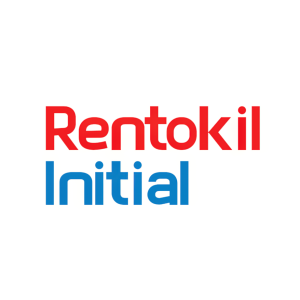Three Tips to Help Businesses Prepare for Severe Storm Weather
READING, Penn., Sept. 9, 2021 /PRNewswire/ -- Hurricane Ida is just the most recent major storm to make landfall in the United States this hurricane season. Thousands of businesses, and more than one million people, were left without power and forced to deal with standing flood waters and significant structural damage. To get communities and businesses back on their feet, experts from Rentokil's family of brands provided tips to deal with the aftermath of severe storm damage.
Operating Through Power Outages
One of the biggest dangers with heavy rain and high winds is power outages. In the age of high-powered appliances and technology, power outages can have significant cost implications on businesses, especially those with temperature-controlled appliances such as restaurants and medical facilities.
As soon as possible after losing power, avoid opening reach-in and walk-in cooler doors to keep refrigerated products cold. Discard any items in the cooling process. Quickly document a few temperatures of refrigerated contents as long as it is safe to remain in the building, and the power outage is thought to be brief. If refrigerated temperatures rise above 41F for more than four hours, or if the time is unknown, discard and do not use
"A freezer in good condition may maintain its temperature for up to 24 hours if unopened," advised Paula Herald, Technical Consultant at Steritech. "If power is expected to be out for an extended time, dry ice can help keep refrigeration temperatures low. Although, if working with dry ice, use caution as it can produce dangerous carbon dioxide gas in closed areas, such as walk-in coolers and freezers."
Dealing with Flood Water
Standing flood water can be highly dangerous for people, buildings and the surrounding area. Flood waters can lead to structural damage and can be polluted with sewage contaminants and architectural waste, posing extreme health and safety risks for employees and staff.
Do not enter a space that has been flooded without first receiving approval from health and safety officials. Once the area is deemed safe to enter, assess all structural damage, look for signs of mold and dispose of anything that can not be washed, rinsed and disinfected such as furniture and carpet. Air decontamination units can be used to help remove any remaining airborne toxins, gases and pollutants once the flood waters have subsided.
"Flood waters can leave behind mold, fungi and other forms of harmful bacteria. Even areas that have not been impacted by flood waters can be filled with indoor contaminants," said Matt Hayas, Director of Product and Innovation at Ambius. "Air decontamination units, such as VIRUSKILLERTM, can be used to not only protect against harmful mold and bacteria, but also against common indoor allergens, toxic gases and airborne viruses."
Assessing Destruction and Debris
Severe storms leave behind damaged roofs, broken windows, fallen trees, debris and trash. Structural damage and piled up debris are not only safety hazards, they can create the perfect harborage for rodents, insects, birds and other pests looking to build a new home.
Once the storm has passed, businesses owners should conduct an extensive walk-through of the property. Identify any open access points and move any fallen trees and debris as far away from the building as possible.
"A minimum distance of 25ft is recommended to keep pests from entering the building,'' said Dr. Nancy Troyano, Board Certified Entomologist and Director of Operations at Rentokil North America. "Rodents can fit through openings about the size of a dime so it's extremely important to conduct a thorough inspection of the building, before and after a storm hits."
Dealing with the aftermath of severe storm damage can be extremely overwhelming and costly. As climate change continues to advance, the threat of extreme weather and flooding situations may soon be a reality for many businesses across the country. Large and small businesses alike can incorporate these tips as part of an overall crisis communication plan.
For more information on emergency preparedness tips and the Rentokil family of brands, please visit Rentokil.com/us.
ABOUT RENTOKIL
In fast-paced businesses, there's no room for pests. Rentokil believes in protecting brands and their customers by minimizing pest disruptions to business. The company's highly-trained experts leverage an integrated pest management approach, honed best practices and field-tested protocols to create pest-free environments.
Rentokil is part of Rentokil North America, which provides commercial and residential pest control to customers in the U.S., Canada and Puerto Rico. The comprehensive pest management solutions include general pest control, mosquito, termite and bed bug inspections and service, vegetation management and bird management.
In addition, Rentokil North America operates business services companies including Ambius, specializing in hand, air and surface hygiene solutions with Hygiene360 as well as interior landscaping and scenting; Steritech, offering food safety and operational assessments; SOLitude Lake Management, providing lake and pond solutions; and Vector Disease Control International, which serves governments and municipalities with mosquito control services.
For more information on Rentokil, visit www.rentokil.com/us.
MEDIA CONTACTS:
Hannah Meadors
hannah.meadors@rentokil.com
![]() View original content to download multimedia:https://www.prnewswire.com/news-releases/three-tips-to-help-businesses-prepare-for-severe-storm-weather-301372522.html
View original content to download multimedia:https://www.prnewswire.com/news-releases/three-tips-to-help-businesses-prepare-for-severe-storm-weather-301372522.html
SOURCE Rentokil








